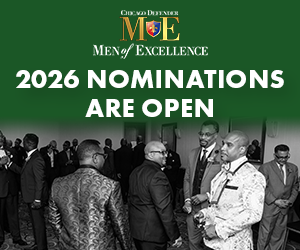by J. Pharoah Doss, For New Pittsburgh Courier
Black Lives Matter captured national attention when civil unrest sparked in Ferguson, MO, after an unarmed Black teenager was fatally shot by a White police officer in 2014. A host of opinion writers immediately supported the slogan “Black Lives Matter”, but admitted they didn’t know what the umbrella organization was about.
Then BLM released six core demands.
Their first demand was “end the war on Black people.” The rest was a condensed version of the 1966 Ten Point Program written by the founders of the Black Panther Party. In other words, it was high-minded idealism that no one could implement with the best of intentions. That made BLM an organization that “imagined a better society” without any serious plans to make it one.
Nevertheless, opinion writers made the bold claim that BLM was the new Civil Rights Movement. But which Civil Rights Movement? The Civil Rights Movement is divided between two eras, the MLK-Era and the Post-MLK Era.
The MLK-Era is the time period between the 1954 Supreme Court school desegregation decision and the passage of the 1965 Voting Rights Act. The MLK-era or the traditional Civil Rights Movement also consisted of multiple organizations working simultaneously to achieve similar objectives.
Since BLM is one umbrella organization with a condensed agenda borrowed from a militant group not affiliated with the traditional Civil Rights Movement, it’s easy to see that BLM was never “the new” version of the MLK-Era.
Therefore, the opinion writers must have meant BLM was “the new” Post-MLK Civil Rights Movement. Post-MLK was the era of Rev. Jesse Jackson and Rev. Al Sharpton. Jackson and Sharpton targeted specific corporations, accused them of discriminatory deeds, and threatened nation-wide boycotts unless the corporations donated to Jackson or Sharpton’s non-profit organizations that supposedly helped minorities.
The targeted corporations complied to avoid bad publicity and costly lawsuits.
Jackson and Sharpton didn’t carry the torch of the traditional Civil Rights Movement, they torched their legacy in order to enrich themselves, and BLM followed Jackson and Sharpton’s lead.
It was no surprise during the 2020 George Floyd riots that corporations donated millions of dollars to BLM. Since George Floyd was an unarmed Black man killed by a White police officer, the corporate money was supposed to help BLM accomplish their main objective, to “end the war on Black people.”
But it wasn’t long until major media outlets ran stories about questionable purchases of million-dollar properties by a BLM founder.
The Associated Press reported that of the $90 million BLM received in donations amid racial justice protests in 2020, $32 million was invested into stocks. A BLM organizer told the AP the investment is expected to become an endowment to ensure that BLM’s “work” continues in the future. The AP reported BLM spent $6 million on a Los-Angeles area compound, which includes a home with six bedrooms and bathrooms, a swimming pool, a sound stage and office space, which is intended as a campus for a Black artists fellowship.
A financial expert said that BLM’s structure makes it difficult to disprove allegations of impropriety, financial mismanagement and deviation from their expressed mission.
The latest development is that BLM grassroots (local chapters) have sued an executive of BLM Global Network Foundation (The fundraisers) for stealing $10 million of donation money and defrauding the local chapters. BLM Global Network Foundation denied the charges and scolded BLM grassroots: For taking the same steps as our White oppressors and utilizing the criminal legal system which is propped up by White supremacy to solve disputes within the movement.
The tragic irony is that the millions of dollars donated to help “end the war on Black people” prompted the war within BLM.



